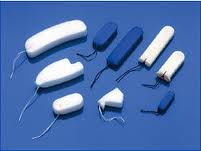Rhinoplasty is one of the top five cosmetic procedures of the face in the United States. It is a challenging operation to perform and it is complicated by being intimately involved with the nasal airway. Some nose operations do not involve efforts to improve the airway and are known simply as a rhinoplasty. Other operations of the nose are done to either improve breathing alone or are combined with changing the nose shape and are known as a septorhinoplasty.
In either type of rhinoplasty procedure, the most dreaded fear of many patients is that their nose will be packed at the end of the operation. As an historic standard of postoperative nasal surgery care, packing today is variably used by the differing backgrounds of surgeons who perform nasal procedures. I routinuely get asked by my rhinoplasty patients about whether their nose will be packed after surgery. The fact that I almost never do nasal packing seems to be of great relief. But I know that my hesitancy to use nasal packing is not universally shared.

The purpose of nasal packing is that it is purported to decrease postoperative complications such as bleeding, septal hematomas and adhesion formation. It achieves bleeding control if needed by pushing up against the location of the bleeding vessel and tamponading it. Septal hematoma prevention is the result of the packing pushing the raised septal mucosa back down onto the cartilage.Adhesion prophylaxis is due to the interposition of the packing between the septal and lateral nasal and turbinate mucosa. While the benefits of packing seem theoretically sound, some have suggested that it is not as effective as thought and may actually cause these problems.
What we do known about nasal packing with certainty is that it is associated with discomfort as long as it is in and it is painful to remove. Patients uniformly do not like and some fear it greatly. This fear may lead to some delaying rhinoplasty or not having it at all.
Much of the purported benefits of packing can be replaced with the use of nasal quilting sutures. With a little more intraoperative time, the septal mucosa can be sewn back by passing back and forth resorbable sutures between the two sides of the mucosal lining. Septal mucosa can also be readapted using plastic splints, which while requiring removal later, is not nearly as obstructive as any form of packing. The use of these two methods completely replaces the need for packing in my rhinoplasty practice with the exception of difficult bleeding either before or after surgery.
Dr. Barry Eppley
Indianapolis, Indiana


